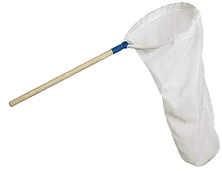Meeting January 17th: Ripples of Invasion: Understanding the Spread and Impact of Aquatic Invasive Plants
- Mark Stukel
- Jan 17
- 2 min read
Our January meeting will be held on Friday, Jan. 17, in the Jones Auditorium at the Connecticut Agricultural Experiment Station in New Haven.
Refreshments will be provided at 6:30 p.m., the business meeting will start at 7:30 p.m., and the presentation should start a bit before 8 p.m. As this subject matter may be interesting to botanists, the Connecticut Botanical Society will be invited to join our meeting. Dr. Foley works on invasive aquatic weeds, and biological control of these weeds with aquatic insects is one of the tools he investigates. Please email ctentsoc@gmail.com for the Zoom link if you are unable to attend in person and would like to attend virtually.
Talk title: Ripples of Invasion: Understanding the Spread and Impact of Aquatic Invasive Plants, by Dr. Jeremiah Foley
Brief presentation description: Global trade and increased connectivity are breaking down geographical barriers, unintentionally enabling the spread of invasive species, particularly in aquatic ecosystems. In 2016, the Connecticut River became a focal point for a genetically distinct strain of hydrilla, known as the "world's worst aquatic weed." A two-year survey from Agawam, MA, to a few miles north of Long Island Sound aimed to quantify its distribution and abundance, raising concerns about its potential spread through recreational activity, which could threaten native plant communities in uninvaded water bodies. To combat this, an Integrated Pest Management (IPM) strategy that combines the strengths of multiple tactics, including insects, presents a promising holistic approach.
Brief biographical sketch: DR. JEREMIAH R. FOLEY, IV joined The CAES Department of Environmental Science and Forestry Office of Aquatic Invasive Species (OAIS) as an Assistant Scientist II in May 2023. Jeremiah received his Ph.D. in Entomology at Virginia Tech and served as a Post Doc at the USDA Invasive Plant Research Laboratory in Fort Lauderdale FL where his research focused on the integration of biological control, chemical control, and community restoration to encourage native ecosystem resiliency. As part of the OAIS team, Jeremiah utilizes this approach to find novel solutions to invasive aquatic plant problems particularly as they relate to the newly discovered Connecticut River strain of hydrilla and water chestnut. He serves on the United States Army Corps of Engineers Connecticut River Task Force and recently published his research on the spread of Connecticut River hydrilla into the State’s lakes and ponds.
Recent Posts
See AllWilliam Tangredi, University of Connecticut, “Oak as a keystone taxon: Kingpins of temperate zone caterpillar and other insect herbivore...
Hi everyone! For our November meeting on Friday, November 15th, we will be having tag-team presentations by Dr. Joseph Coolon and his...
While not a monthly meeting, this is a special announcement that CES's very own Mark Stukel will be giving a public presentation as part...













Comments